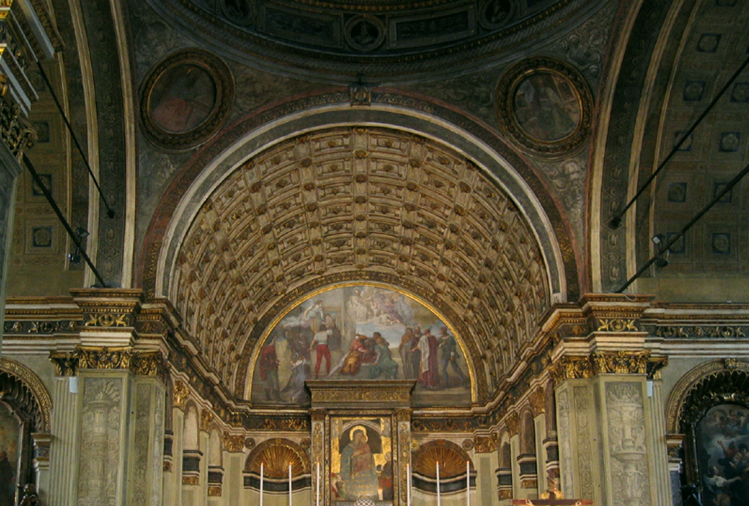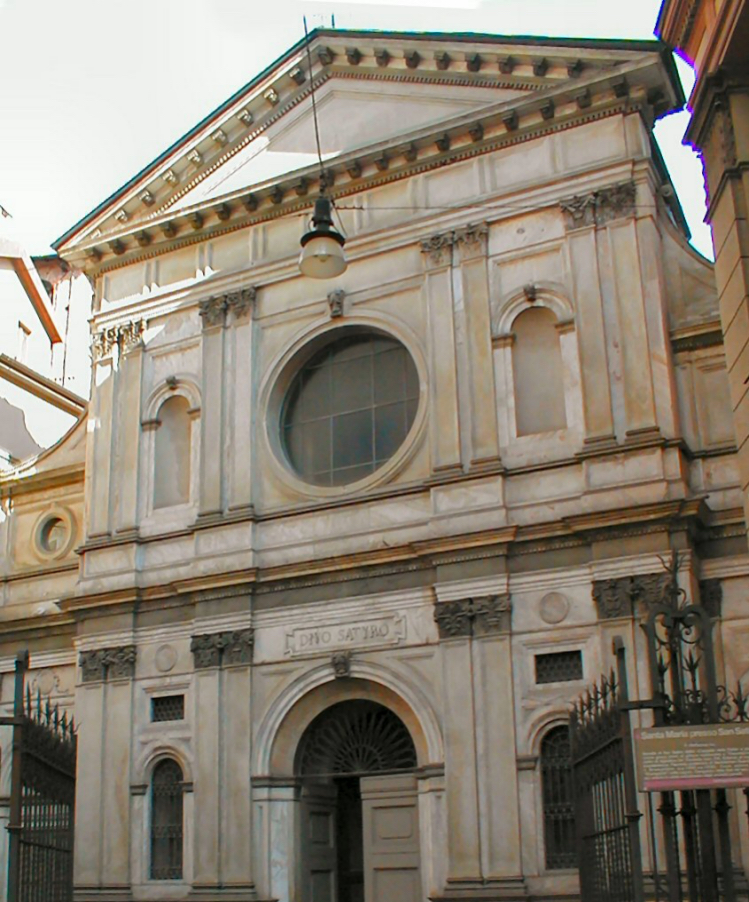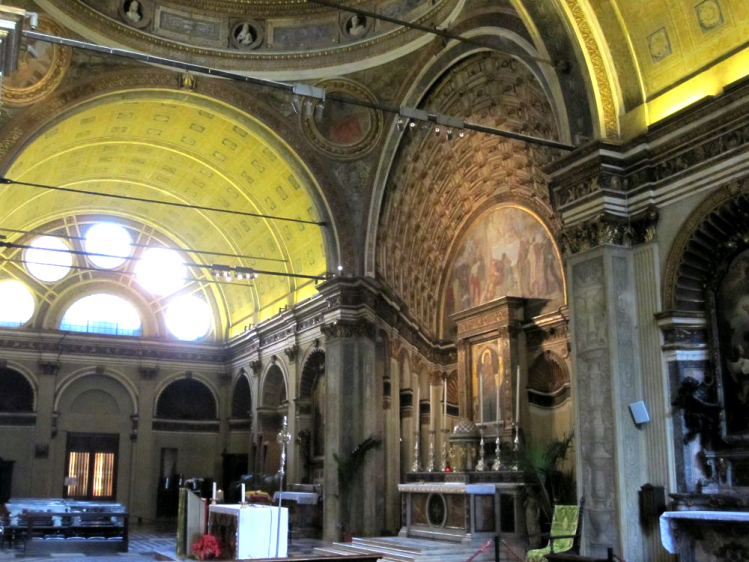
Did you know that in Milan there is a place made to amaze?
The church of Santa Maria presso San Satiro is one of the most spectacular churches you can visit in the historic centre of Milan and holds a treasure: Bramante’s fake apse.
Bramante’s fake apse in Milan’s Santa Maria presso San Satiro

The construction of the church dates back to the end of the 15th century and is located where there was already a small medieval chapel. It is located a few steps from Piazza Duomo and houses a masterpiece inside: Bramante’s illusionistic faux apse from the church of Santa Maria presso San Satiro.
Although the space available for the construction of an apse was limited, Bramante did not renounce monumentality, as requested by his prestigious patron: Duke Galeazzo Maria Sforza, Lord of Milan.
However, even the duke’s idea of grandeur and disproportionate ambition found limits!
At the back of the church was (and still is!) a road that could not be closed off and this prevented the building from being extended, compromising the harmony of the structure.
Bramante devised an ingenious solution by creating an illusionistic choir and lengthening the space.
BRAMANTE’S FAKE APSE
The perfect combination of paint and stucco makes this ingenious solution very similar to Donatello’s ‘stiacciato’ technique, i.e. the sculptural technique that allows a relief of a few millimetres and provides an illusion of depth.
As in Donatello’s stiacciato, at Santa Maria presso San Satiro the thickness of the apse gradually decreases from the foreground to the background.Bramante’s solution is considered an example for most later trompe l’oeil, although in reality the ability to represent reality by giving the observer the illusion of looking at real, three-dimensional objects already existed in antiquity.

THE PERSPECTIVE ILLUSION
The most extraordinary feature of Bramante’s apse is its perspective illusion. The apse of the church is very narrow but Bramante managed to create the illusion of a deep space, similar to a Latin cross church, through the skilful use of trompe-l’œil. The dome appears to soar in depth, but is actually flat, with its vanishing point located in a false choir that appears to be an architectural opening.
The trompe-l’œil technique involves the use of perspective painting to create the illusion of depth and three-dimensional space on flat surfaces. In this case, Bramante combined his skill in architecture with painting to achieve a spectacular effect. Linear perspective, a fundamental feature of Renaissance art, was applied flawlessly. The lines converge towards a central vanishing point, creating the illusion of unexpected depth.
The perspective illusion is not the only fascinating aspect of the apse. Bramante integrated architectural and decorative details with great care. The capitals of the columns, for example, seem to emerge from the flat wall, another example of Bramante’s ability to combine reality and illusion.
Bramante’s faux apse in the Church of Santa Maria presso San Satiro is a fascinating example of how an artistic genius could challenge spatial limitations through innovation and creativity. This perspective masterpiece remains a testimony to the extraordinary artistic legacy of the Italian Renaissance and is one of the must-see masterpieces in Milan.

